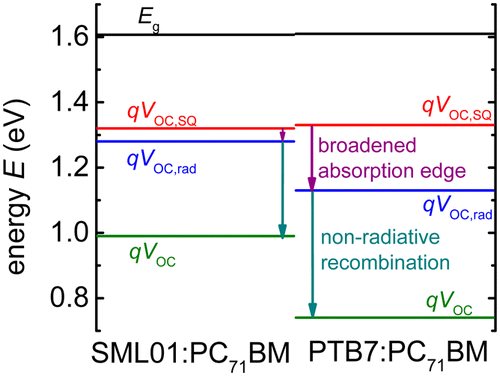We analyze the voltage losses at open circuit in solution-processed, small-molecule:fullerene blend solar cells, using electroluminescence and external quantum efficiency measurements and the reciprocity relationship between light absorption and emission. For solar cells made from oligo-thienylenevinylene-based donors and phenyl-C71 butyric acid methyl ester (PC71BM), we find that the voltage loss due to the finite breadth of the absorption edge is remarkably small, less than 0.01 eV in the best cases, while the voltage loss due to nonradiative recombination reaches 0.29 eV, one of the smallest values reported for an organic solar cell. As a result, the open-circuit voltage reaches around 1.0 V for an optical gap of 1.6 eV, greatly exceeding the voltage of a high-performance polymer-based system with similar optical gap. We assign the remarkably small absorption broadening loss to a low degree of energetic disorder in the small-molecule system that allows efficient charge separation at a lower driving force than in typical conjugated polymer blends.
